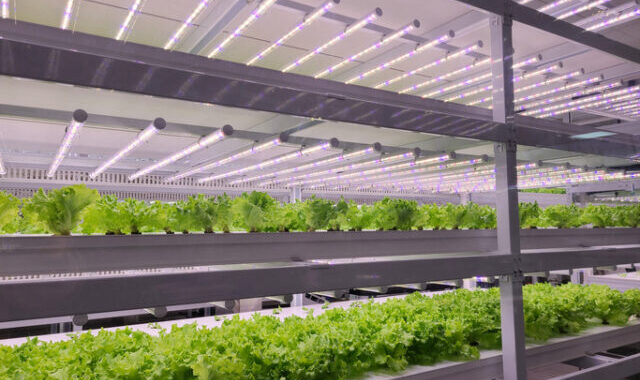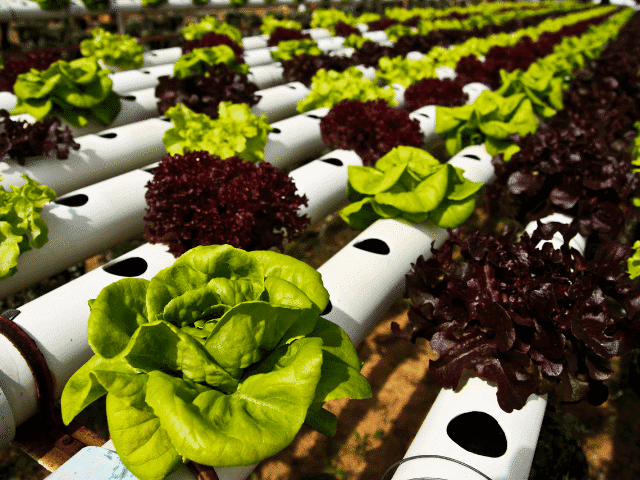The Benefits of Vertical Farming

The Benefits of Vertical Farming
As the global population continues to rise, the demand for sustainable and efficient agricultural practices has become more pressing than ever. In response to this challenge, vertical farming has emerged as a revolutionary approach that maximizes space for crop production. This blog post delves into the benefits of vertical farming, exploring how this innovative technique is reshaping the landscape of agriculture and contributing to a more sustainable future.
1. Space Efficiency
One of the primary advantages of vertical farming is its exceptional space efficiency. Traditional agriculture relies on vast expanses of horizontal land, often limiting cultivation to specific geographic regions. In contrast, vertical farming involves stacking layers of crops vertically, allowing for multiple layers of cultivation in a confined space. This makes it particularly suitable for urban environments, where arable land is scarce.
2. Increased Crop Yield
Vertical farming facilitates year-round cultivation and precise control over environmental factors, leading to increased crop yields. By optimizing factors such as light, temperature, and nutrient delivery, vertical farms can produce crops at a faster rate compared to traditional farming methods. The continuous growth cycles result in higher yields per square foot, addressing the growing demand for food production.
3. Water Efficiency
Traditional agriculture often requires substantial water resources for irrigation. Vertical farming, on the other hand, employs hydroponic or aeroponic systems that use significantly less water. The closed-loop systems in vertical farms recycle water efficiently, reducing overall consumption and addressing concerns related to water scarcity.

4. Climate Independence
Vertical farms are designed to operate in controlled environments, allowing for climate independence. Regardless of external weather conditions, crops can thrive in optimal conditions within the vertical farming structure. This climate control not only ensures consistent crop production but also mitigates the impact of extreme weather events on agriculture.
5. Reduction in Environmental Impact
Vertical farming minimizes the environmental footprint associated with traditional agriculture. The controlled environments eliminate the need for large amounts of arable land, reducing deforestation and habitat destruction. Additionally, the use of vertical space and efficient water utilization contribute to a more sustainable and eco-friendly farming model.
6. Locally Sourced Produce
The vertical farming model supports the concept of local food production. By establishing vertical farms in or near urban areas, fresh produce can be grown closer to where it is consumed. This reduces the carbon footprint associated with long-distance transportation of food, promoting a more sustainable and locally sourced supply chain.
7. Year-Round Availability
Traditional farming is often subject to seasonal constraints, limiting the availability of certain crops. Vertical farming, with its controlled environments, enables year-round cultivation. Consumers can access a continuous and diverse supply of fresh produce regardless of external climate variations.
8. Mitigation of Land Scarcity
As urbanization expands, agricultural land becomes scarcer. Vertical farming addresses the challenge of land scarcity by utilizing vertical space rather than sprawling across vast horizontal landscapes. This makes it possible to integrate farming into urban areas, creating a more efficient use of available space.
9. Employment Opportunities
The implementation of vertical farming requires skilled labor for system management, crop monitoring, and maintenance. This presents an opportunity for job creation in the agricultural sector. As the industry continues to grow, employment opportunities in areas such as technology, engineering, and horticulture will expand.
10. Technological Innovation
Vertical farming relies on advanced technologies such as LED lighting, automated nutrient delivery systems, and data analytics. This emphasis on technology encourages ongoing innovation, leading to continuous improvements in efficiency, sustainability, and overall productivity within the vertical farming sector.
Conclusion
Vertical farming stands at the forefront of modern agriculture, offering a sustainable and space-efficient alternative to traditional farming methods when you go here. With its ability to maximize crop production in limited space, reduce environmental impact, and provide locally sourced produce, vertical farming represents a crucial step toward building a resilient and sustainable food system for the future. As technology continues to advance and the demand for food grows, the benefits of vertical farming are likely to play an increasingly integral role in meeting the challenges of feeding a growing global population.
